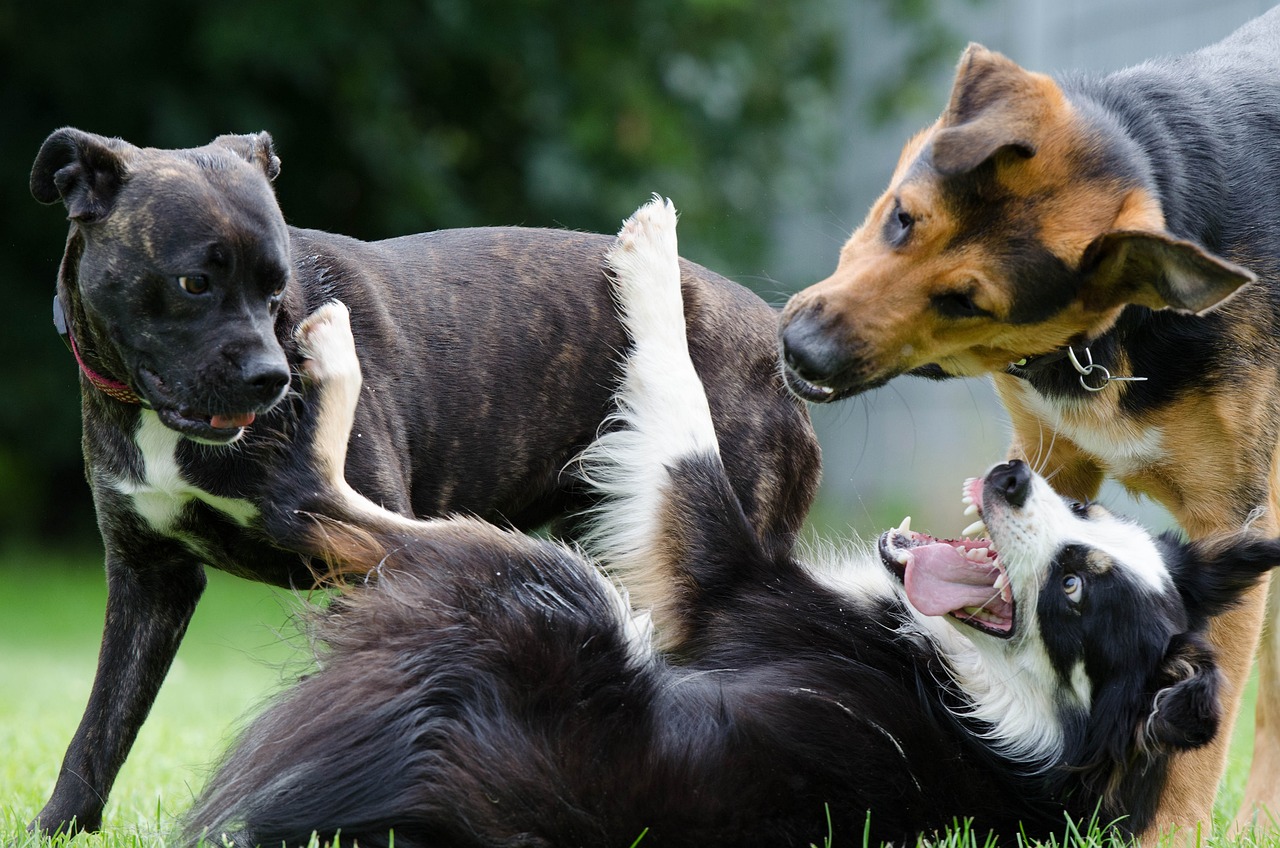
If you’re unfamiliar with the concept of Alpha Roll, then Alpha roll is the act of physically forcing your dog to lie on its back or to return to a submissive position and keep it there in order to demonstrate they are your most dominant one in the family and that they are to be submissive to you.
People who advocate for the method compare dogs to wolves and say that for a successful relationship, you have to be the one to lead or your dog will attempt to assert its authority over you.
Based on science, force-free training methods However have been proven to be more effective and will help you have a more healthy and more enjoyable bond with your pet.
Dogs aren’t Wolves and Wolves don’t roll in the first place.
Initial studies on the behavior of wolves carried out in the 1940s were conducted in captivity. These wolves were separated and brought together at different phases of their lives. This created tension and could result in conflict within the hierarchy of the group.
In the past, as demonstrated by the world-renowned wolf expert David Mech and others, in their wild surroundings the pack is typically comprised of similar individuals and there isn’t typically an orderly struggle as the “Alpha” concept has become outdated.
Rarely do you witness a wolf pinning an individual in a bid to take over them? Most often when there is tension within the group, you might see members voluntarily revert to a submissive, passive position.
Dogs can also show this behavior of appeasement by showing that they do not pose a threat, and have only peaceful intentions. Alpha Rolls are not normal behavior. Alpha Roll is not normal behavior for wolves or dogs.
It’s also been established that dogs differ in their behavior from their wolf ancestors in general and applying the same rules throughout the entire spectrum is not an appropriate approach.
What is the reason why the Alpha Roll Is Not a Recommendation for Training
The Journal of Applied Animal Behaviour published an investigation in 2009 which showed that these methods of aversion frequently result in more problematic behaviors.
If a dog is exposed to brutal and aggressive training techniques, it could trigger a fearful reaction. The dog will often stop their movements until they no longer fear being threatened, or being compelled to defend itself. In the end, this could result in an angry outburst. In addition, it is instructing your dog using methods that do not create an environment of trust.
What are the recommended training Alternatives?
It’s much more efficient and humane to train your dog in a different desired behavior using reward-based techniques instead.
The dog who growls when asked to get off the couch is not trying to rule you. If your dog is grouchy when you attempt to pull them off the couch it is not because they are trying to dominate. They simply want to remain at their comfy spot and have learned that a snarl is usually a sign of being left on their own.
If you are not keen on having your dog sitting on the sofa, buy a cozy pet bed and give your dog tasty treats when they get there. You should also develop the “off” instruction that relies on your dog receiving a reward when they leave the couch when you ask them to.
When your pet is zipping it is usually because they are eager to meet you. Another myth that is commonly heard is the belief that your pet is jumping over you to demonstrate its power. However, your dog probably is doing this because it was accidentally encouraged to do it before. Perhaps when it was a pup the behavior was adorable and was even encouraged However after your pup has become mature, this behavior isn’t as valued. Dogs who jump are doing so due to the fact that it leads to them receiving the attention they want even if it comes from the owner continually making them jump.
Find a way to train your dog to engage in an alternative behavior. If it’s got all four feet on the ground and it is rewarded with a delicious reward. If guests arrive at the home, you can ask your dog to return to bed and give it a treat. Make sure that the guests and family members are consistent. Ask for them to turn their backs and not engage in jumping to ensure that they aren’t encouraging it.
Let your dog know that house guests are not something to be scared of. Perhaps your dog has grown at someone who has walked to your home. When your dog has become scared of strangers, it’s normal that they let someone they don’t feel at ease and a growl can be an all-purpose communication tool. If you address this issue by placing them in the Alpha Roll, it can make them think of strangers as uncomfortable behavior and make them even more scared and likely to use aggressive behavior.
It’s more effective and kinder to train your dog that there’s no reason to be afraid. Do not force interaction between your dog and visitors. Provide a secure space such as an animal crate or go to a different area. If you’re comfortable within the same area and your dog is having an interaction that is positive, whether it moves closer to the person who is visiting, looks at them, or rewards your pet. Train your dog to understand to be aware that interaction with people who are not yours can result in positive outcomes!
When you train using these non-force and reward-based techniques the bond you share between you and your pup will strengthen and you’ll be able to see more lasting results.